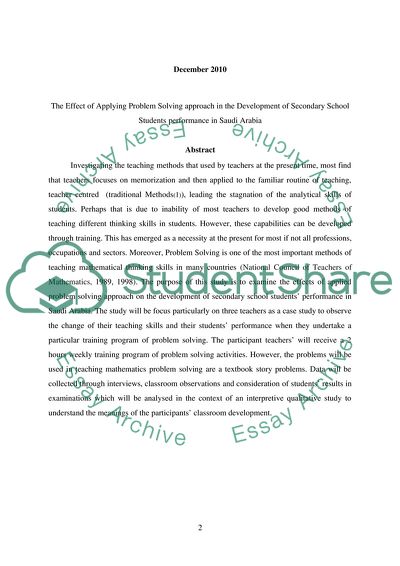Cite this document
(The Impact of applying Problem Solving Approach in the Development of Research Paper, n.d.)
The Impact of applying Problem Solving Approach in the Development of Research Paper. Retrieved from https://studentshare.org/education/1744642-the-impact-of-applying-problems-solveing-in-approach-in-the-developmnet-of-secondary-school-student-performance-in-saudi-arabia
The Impact of applying Problem Solving Approach in the Development of Research Paper. Retrieved from https://studentshare.org/education/1744642-the-impact-of-applying-problems-solveing-in-approach-in-the-developmnet-of-secondary-school-student-performance-in-saudi-arabia
(The Impact of Applying Problem Solving Approach in the Development of Research Paper)
The Impact of Applying Problem Solving Approach in the Development of Research Paper. https://studentshare.org/education/1744642-the-impact-of-applying-problems-solveing-in-approach-in-the-developmnet-of-secondary-school-student-performance-in-saudi-arabia.
The Impact of Applying Problem Solving Approach in the Development of Research Paper. https://studentshare.org/education/1744642-the-impact-of-applying-problems-solveing-in-approach-in-the-developmnet-of-secondary-school-student-performance-in-saudi-arabia.
“The Impact of Applying Problem Solving Approach in the Development of Research Paper”, n.d. https://studentshare.org/education/1744642-the-impact-of-applying-problems-solveing-in-approach-in-the-developmnet-of-secondary-school-student-performance-in-saudi-arabia.


